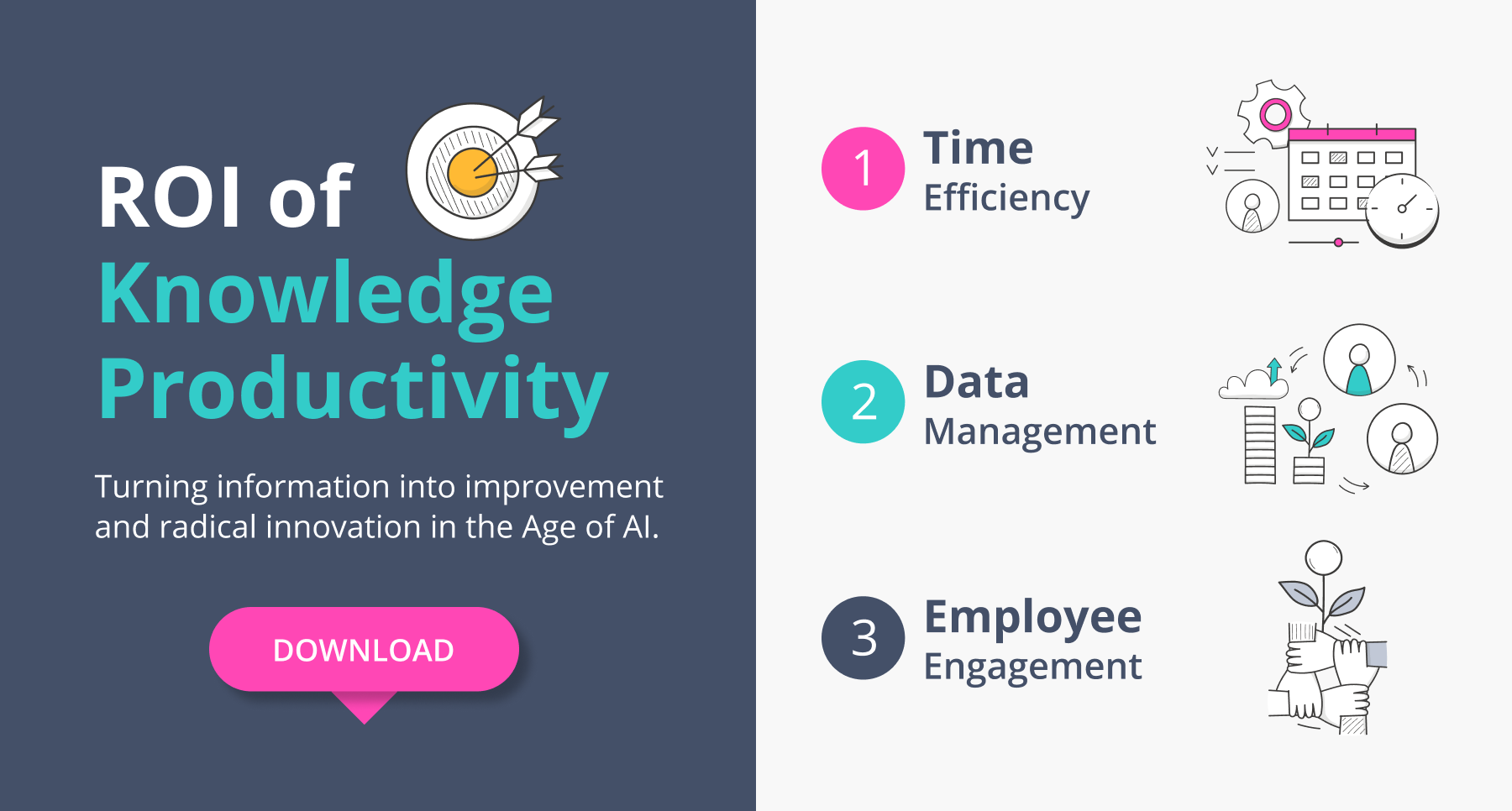Productivity matters because it creates huge value. In some sectors, a five per cent uptick in productivity has coincided with up to a 50 per cent increase in total shareholder return (Financial Time, 2013). This would catch the attention of any CFO!
The ability to effectively leverage information and drive innovation is even more crucial for organizations productivity and to stay competitive. With the advent of artificial intelligence (AI), businesses now have unprecedented opportunities to turn information into tangible improvements and foster radical innovation. In this blog post, we will explore the concept of Return on Investment (ROI) for Knowledge Productivity and how it can be achieved by reducing digital friction, unifying information, and engaging employees with a human-centric digital workplace.
In this blog:
Knowledge Management ROI refers to the financial and non-financial returns an organization gains from investing in knowledge management initiatives. These returns can be realized through improved efficiency, reduced costs, enhanced innovation, better decision-making, and increased competitive advantage.
Measuring KM ROI is crucial for several reasons:
To measure the ROI of your knowledge management initiatives, it's essential to track relevant metrics. Here are some key metrics to consider:
Employee Productivity
Collaboration and Engagement
Decision-Making Effectiveness
Cost Reduction
Innovation and Growth
Businesses have been trying to calculate the ROI of knowledge management investments for more than two decades, with few successes. Knowledge is a valuable asset that, when properly harnessed, can drive productivity, enhance decision-making, and spur innovation. Traditional approaches to knowledge management often fall short due to fragmented information, information silos, and limited accessibility.
Knowledge productivity is defined as “A process that entails signaling, identifying, gathering, absorbing, and interpreting relevant information, using this information to develop new capabilities and to apply these capabilities to incremental improvement and radical innovation of operating procedures, products, and services” (Kessels, 1996, 2001 as cited in Kessels & Poell, 2004, p. 146).
ROI for Knowledge Productivity encompasses both tangible and intangible benefits, such as increased productivity due to time efficiency, improved employee engagement, enhanced customer experiences, improved decision-making, and innovation breakthroughs.
| 20% of the average staff members day is spent searching for what they need to do their job - is this the case in your organization? |
If you’re a company of 1000 people with an average salary of $60,000, you’re spending approximately $12M a year to employ your people to search for information!

|
Download infographic on how to calculate ROI of knowledge management.Download now > |
Disengaged employees cost the US economy approximately $350 billion per year in lost productivity, accidents, theft, and turnover. Organizations can improve corporate performance and employee retention by engaging their workforce.
| Does your organization have Digital overload - 8.8 hours a week reading and writing emails and 7.5 hours logging meetings - from WSJ article |
In the Age of AI, turning information into improvement and radical innovation has become more attainable than ever before. Organizations can unlock the full potential of their knowledge by reducing digital friction, unifying information, and creating a human-centric digital workplace. This, in turn, enables organizations to achieve a remarkable Return on Investment for Knowledge Productivity. Embracing these transformative approaches empowers organizations to thrive in today's dynamic business landscape, driving continuous improvement, and fostering radical innovation.

Did you know that highly engaged employees return 120% of their salary? Download our infographic on how to calculate, improve and drive ROI.
Subscribe to our newsletter
This site is protected by reCAPTCHA and the Google Privacy Policy and Terms of Service apply.